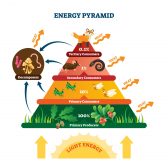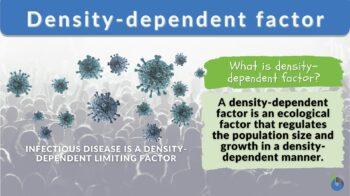
Density-dependent factor
n., plural: Density-dependent factors
[ˈdɛn.sə.ti dɪˈpɛndənt ˈfæk.tɚ]
Definition: factor restricting the size of a population based on density
Table of Contents
Density-dependent factors are the limiting factors of an ecosystem that regulate population growth in a density-dependent manner. They are the key regulators in K-strategist organisms. These limiting factors are biotic in nature ranging from disease, predation, and competition to parasitism.
They ensure that the carrying capacity of the environment is not eroded by controlling the survival and reproduction processes of the population. We will be discussing the former in detail in this article and provide you with answers to questions like what is a density-dependent factor, what are limiting factors, some examples of density-dependent factors, etc.
Density-dependent Factors Definition
In biology, the definition of density-dependent factors is the ecological factors that affect population size and growth in a density-dependent manner. Some of the common examples are the availability of food, parasitism, predation, disease, and migration.
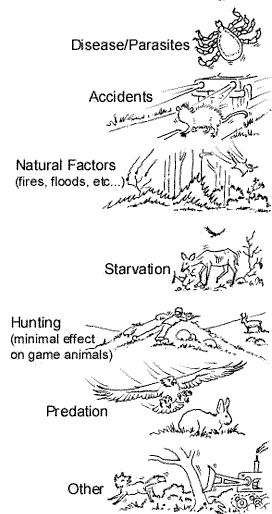
Their effects on the population are directly or inversely related to population density. As the population size increases or decreases in a defined area, increasing population density or decreasing population density are respectively noted. Under such a defined parameter, the role of these factors and their impact need to be studied for understanding population ecology extensively.
Population ecology is a specialized field in ecology that deals with the populations of different species, their interactions with each other, and the environment they reside. These interrelationships in the population dynamics form the basis of how the different populations will perform, grow and thrive together. The different population traits like preferences, population size, migrations, etc are dependent on a number of ecological factors.
These ecological factors or limiting factors are broadly classified as biotic factors and abiotic factors. To list a few, some are air, water, sunlight, resource conditions, competition and food availability, disaster probability, etc. These factors bring about different effects on population size and growth. Also, the manner in which these factors bring about their effects is different. The two different manners are density-dependent and density-independent manners.
The ecological factors that bring about their effect on the population size and growth in a population density-dependent manner are called “density-dependent factors”. Conversely, the ecological factors that bring about their effect on the population size and growth in a population density-independent manner are called “density-independent factors”. These factors exert their effects on different types of populations alike, whether they are sparse or denser populations. Example: natural disasters, weather, etc.
Watch this vid about limiting factors such as density-dependent factors and density-independent factors:
Biology definition:
A density-dependent factor is a factor whose effects on the size or growth of a population vary with the population density. Density-dependent factors typically involve biotic factors, such as the availability of food, parasitism, predation, disease, and migration. As the population increases, food becomes scarce, infectious diseases can spread easily, and many of its members emigrate.
Compare: density-independent factor
See also: density, population
What Are Density-Dependent Factors?
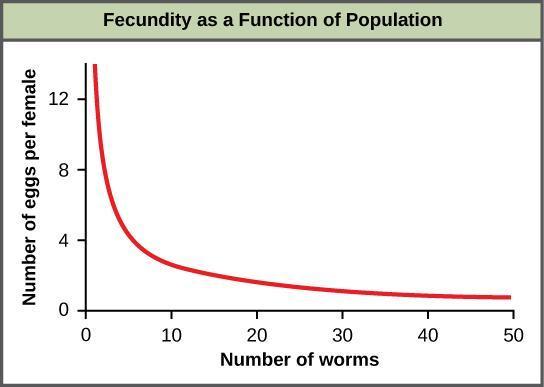
Before we move ahead into the details of density-dependent factors, it’s important that we understand some concepts of population ecology like limiting factors and carrying capacity.
Limiting Factor
Limiting Factor (biology definition):
A limiting factor is defined as a variable constraint that holds the potential to limit, restrict, control, and regulate the population growth of a system like a population. Both density-independent and density-dependent factors are subtypes of limiting factors. That’s the reason they are also referred to as density-independent limiting factors and density-dependent limiting factors.
Nature of density-dependent limiting factors
Density-dependent limiting factors are typically biotic in nature. In contrast to the density-independent limiting factors (typically abiotic) which affect all the populations nearly equally irrespective of their densities, these limiting factors have a confluence with density. They affect the different populations based on their respective densities.
Carrying capacity
In biology, carrying capacity is the maximum size of population for a species that can be sustained under a given set of environmental conditions. Both types of limiting factors determine the carrying capacity too.
The question is, how do the density-dependent factors, in particular, determine the carrying capacity?
Density-dependent growth takes into account the direction in which the population is growing. If the population is growing astronomically and consuming all the available resources, these factors tend to adopt a ‘strongly regulative role’ to shun the rapid growth. This can happen in a number of ways by regulating birth and death rate.
Example: slowing down the births (down-regulating birth rates) or increasing the deaths (up-regulating death rates).
It can also happen by regulating migrations (immigrations and emigrations), predation events, disease frequencies, parasitism events, and competition. By regulating the size and direction of growth of a population, these factors determine the carrying capacity of the environment.
Density-dependent factors play an important role in either regulating “reproduction” or “survival” of the members of a given population in order to bring their effect. As the population of a species grows, these factors work to maintain the population at a level that’s stable and sustainable by the available set of resources.
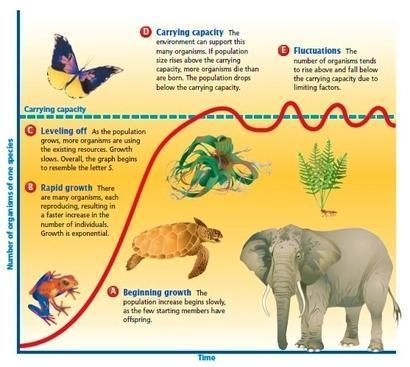
Delayed density dependence
In population ecology, we define delayed density dependence as a situation whereby negative feedback controls the population size and growth along with a notable time lag.
Examples of Density-dependent Factors
Now that we know how to define density-dependent factors, let’s look at some examples.
Disease
Disease frequency and spread is an important limiting factor that depends on the density of a given population.
Situation: When density is high.
In such a situation, the population is tightly packed and members are living very closely, fighting for resources, and barely surviving. Now, if a disease erupts and starts spreading, the chances of it reaching out to the majority are very high as all the members are in close contact with each other. This boosts the chances for all types of bacterial, viral, and fungal transmissions.
For the survivability of the pathogenic organism, this is the most favorable population size as the breeding ground is huge when the density is high. In such a case, the pathogen won’t like to kill off its hosts as that would reduce the pool size of the breeding ground. So, this limiting factor won’t try to downregulate the overall population size. But when the population size is nearing carrying capacity, disease incidence will regulate the population size and keep it within the limits.
So, is disease a density-dependent factor? The answer is yes!
Parasitism
Parasitism is another density-dependent limiting factor. In a loosely packed population, the transfer of any type of parasites is less probable. But when the population is densely packed, both endoparasites and ectoparasites can move from one host to another at a good pace. This can happen via any mode of transmission like direct or indirect contact.
The virulence of the parasite will affect the different population sizes differently.
- In a low-density population, the parasite will prefer to derive nutrients from the host but not kill it ever.
- In a high-density population, the parasite possesses the preference to turn virulent and kill the host.
- In a tightly-packed population, the parasite can spread from one host to another more frequently and increase its range of hosts.
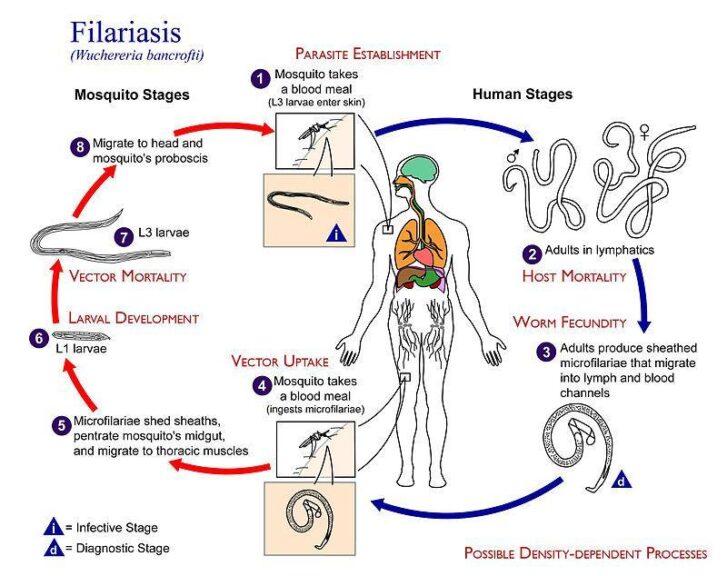
Predation
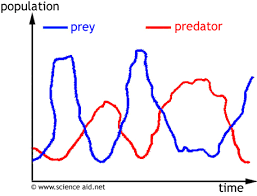
Predation is another important density-dependent factor. Predation-prey relationships are co-evolutionary relationships. When a prey population increases, the predator population is at benefits as this increases the food availability.
This increase in food availability further increases the predator population while controlling the prey population. Now, when the prey population falls below a particular number, this creates a food deficit for the predators. This cycle now controls the predator population. Essentially, both the elements (predator and prey) involved in this limiting factor (predation) are density-dependent.
Example: Lemming is an Arctic rodent species. Since their habitat is the extreme tundra biome, their populations show “population booms” periodically. The fluctuations in the lemming population (prey population) have a significant effect on predator behavior. The major predators (like snowy owls) of the lemmings (like the stoat population) have recently been studied and found to be controlling the lemming population in addition to the role of the population cycle.
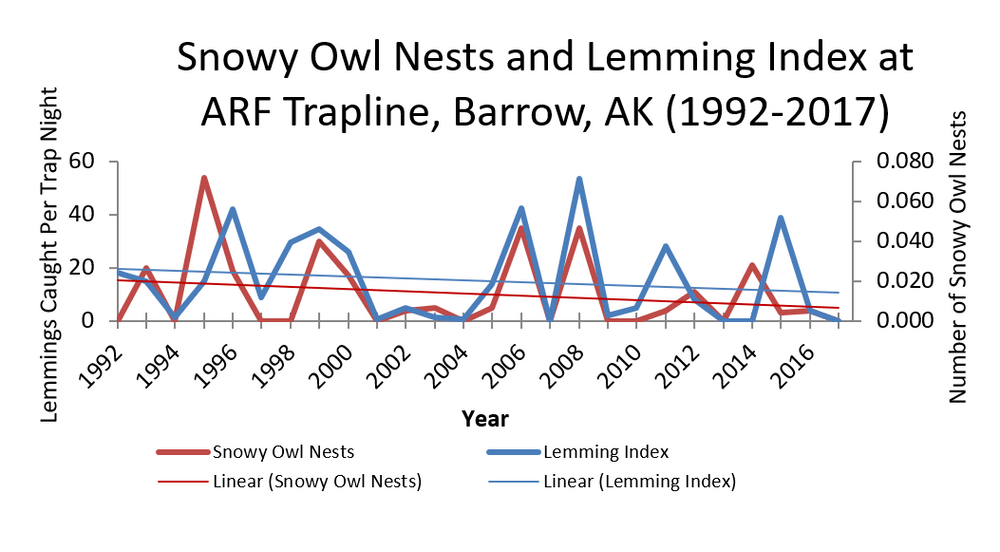
Competition
Competition is another essential biotic and density-dependent limiting factor. Competition arises between members of a population when space and resources are constraints. This means when their availability is limited, it gives rise to fights for those limited resources. If a population grows beyond the carrying capacity, hardcore competition is bound to happen.
This competition can take different forms like competition for soil nutrients, water, and sunlight among competing individuals of plant species in an area. It can also be seen as a competition between animals for scarce resource availability in the form of space, breeding ground, mates, food, water, nesting, hibernation spaces, etc.
Ecological Role of Density-dependent Factors – Examples
As previously discussed, the examples of density-dependent factors are:
- Disease frequency
- Competition
- Predation
- Parasitism
Now, let us take a closer look at the role of these factors in various ecosystems.
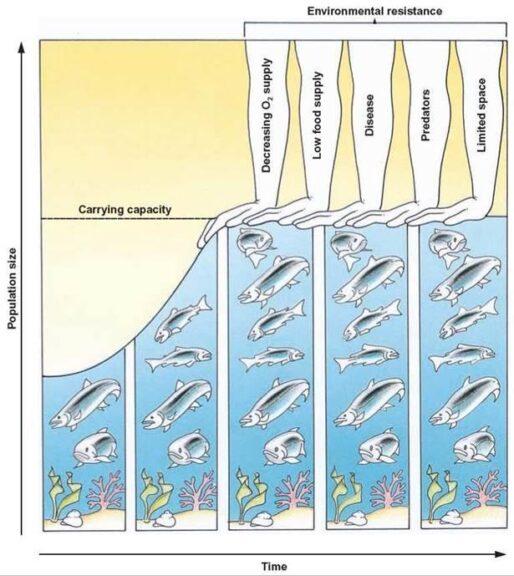
Watching Grass Grow
In a general literal sense, ‘watching the grass grow’ is an idiom for something very dull and boring. But the scientists working in the field of grasses have found out that density-dependent factors can immensely affect the growth rates of grasses and other organisms.
What they did was they started growing grasses in an empty field, while keeping enough distance between the seeds to simulate “low-density regions”. After several generations, they tried to note the difference in the growth of these grasses when the area turned from a “low density” to a “high density” one. They noted that the density-dependent factors which were earlier favoring the population growth (upregulated birth rate) now switched to negative (slowed down birth rates).
You should understand that the density-dependent factors were not affected themselves. Rather they started regulating the population in an inverse manner now (inverse density dependence). As the density and crowding increased, these factors slowed down the “growth and reproduction processes” in the population. This observation led them to decipher the role of these factors in density-dependent populations.

Fish in a Tank
Just like grasses, when a limited number of fish are introduced into a water tank, they grow and reproduce in a stable manner when the density is low. But as the density increases, the density-dependent factors start limiting and affecting the fish population size in the tank. The factors might be different in different situations but their mode of action is density-dependent.
Parasites and Hosts
Parasite host relationships are quite intriguing. They tend to co-evolve in nature. They are also an exceptional example of density-dependent factors controlling the event. As discussed in the parasitism section above, parasites usually don’t injure the host for their best interests. When the population of parasites is small and density is low, the harm to the host is meager. But as the parasite density increases, it starts to negatively implicate the host. At this point, the role of “density-dependent factors” becomes instrumental. These factors regulate the parasite population in order to keep the host alive, which without being said is important for the “mere existence” of the parasite, let alone their virulence.
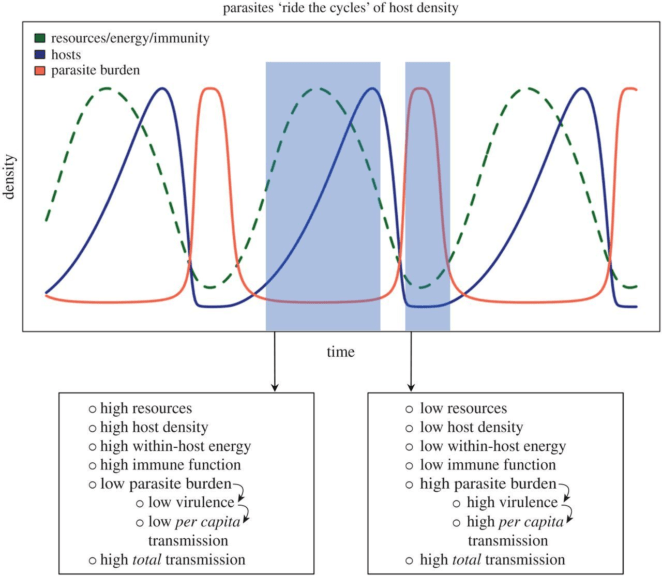
Density-dependent inhibition
In biological cell cultures, we notice this phenomenon of density-dependent inhibition. This growth inhibition is exhibited by most of the normal animal cells in cell cultures. In the process, the cells stop dividing when the cell population reaches a “critical cell density”.

Distinct and Special Roles of the Two Types of Limiting Factors
As we now know that there are two types of limiting factors — density-dependent and density-independent factors. Both carry out specialized roles in the ecosystem. As we commonly notice around us, there are different types of organisms thriving on natural resources. Their lifestyles are unique to them. We scientifically call them r-strategists and K-strategists. An important point to note here is that density-dependent factors can control only K-strategists. Let’s get to know why…
r-strategists and K-strategists | ||
|---|---|---|
| Characteristic Feature | r-strategists | K-strategists |
| Reproductive cycles | Short | Long |
| Number of young ones produced | Many | Few |
| Prenatal & Postnatal investments for the offspring | Small | Large |
| Death/Regulation by factors like | Climatic factors | Disease, parasitism, competition, predation |
| Major control by | Density independent factors | Density-dependent factors |
| Ability to grab the opportunity of “transiently favorable environmental conditions” | Yes (the exponential growth in favorable environmental conditions) | No (they show typical logistic growth) |
| The consequence of this ability | Grow rapidly when the conditions are favorable, reach a “high point”, and decrease very rapidly too when the favorable conditions subside | There is no rapid growth as such. Population grows at a decent pace and it is maintained at a “stable equilibrium level” by the density-dependent factors. |
Data Source: Dr. Harpreet Narang of Biology Online
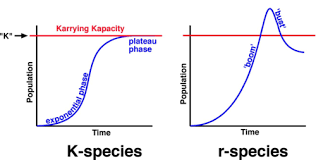
What are the reasons density-dependent factors are insignificant in the lives of r-strategists?
Since the “parental investment’’ is meager in the r-strategists, they produce large numbers of offspring. Not all of these offspring reach sexual maturity. This high death rate in the early lives of r-strategists makes the cause of death insignificant. Hence, the death by density-dependent factors becomes “numerically insignificant” in this type of organism. And this is the reason, density-dependent factors are held insignificant in controlling the population growth of r-strategists!
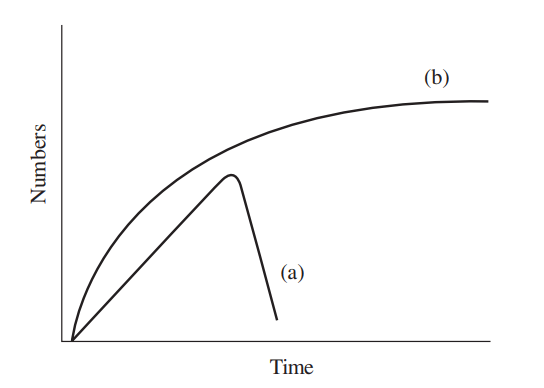
Answer the quiz below to check what you have learned so far about density-dependent factors.
Further Reading
- Population Regulation in an Ecosystem – Tutorial
References
- Citation: Edwards, W. J. & Edwards, C. T. (2011) Population Limiting Factors. Nature Education Knowledge 3(10):1
- Antonovics, J., & Levin, D. A. (1980). The ecological and genetic consequences of density-dependent regulation in plants. Annual Review of Ecology and Systematics, 11, 411-452.
- Berryman, A., & Turchin, P. (2001). Identifying the density‐dependent structure underlying ecological time series. Oikos, 92(2), 265-270.
- Benton, T. G., & Grant, A. (1999). Optimal reproductive effort in stochastic, density‐dependent environments. Evolution, 53(3), 677-688.
©BiologyOnline.com. Content provided and moderated by Biology Online Editors.



